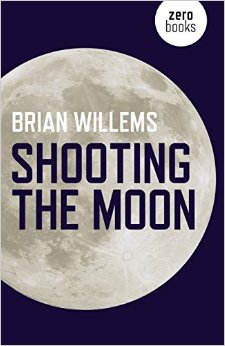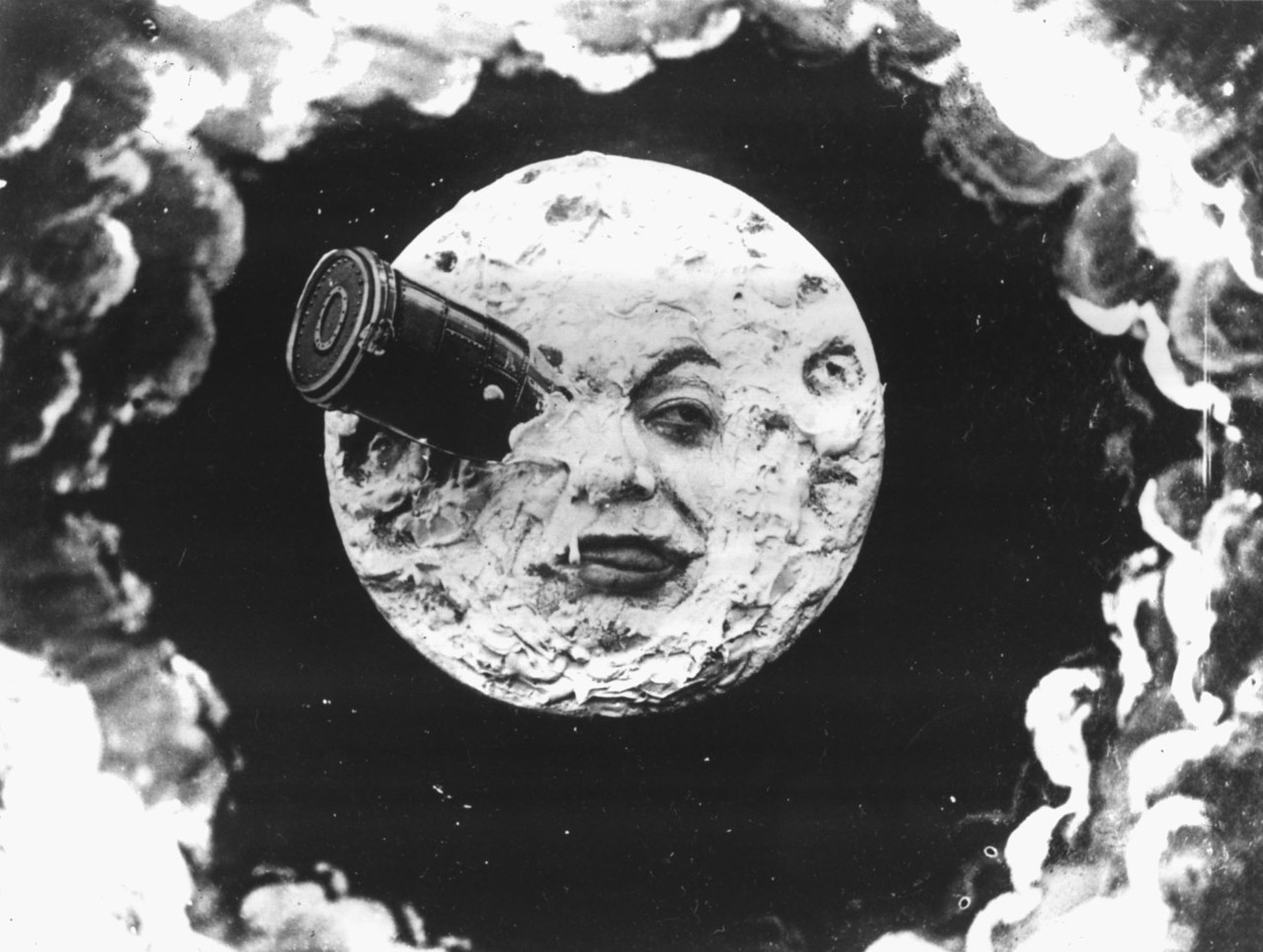 Brian Willems is assistant professor of literature and film theory at the University of Split, Croatia. He is the author of Hopkins and Heidegger (2009), Facticity, Poverty and Clones (2010), and Shooting the Moon, which hit shelves this past May. To get some insight into his newest book, Film Matters conducted a Q & A with Willems via email correspondence (2-4 June 2015).
Brian Willems is assistant professor of literature and film theory at the University of Split, Croatia. He is the author of Hopkins and Heidegger (2009), Facticity, Poverty and Clones (2010), and Shooting the Moon, which hit shelves this past May. To get some insight into his newest book, Film Matters conducted a Q & A with Willems via email correspondence (2-4 June 2015).
Kailyn Warpole: Please tell us a little more about your book.
Brian Willems: Shooting the Moon is a book about the role of the moon in science fiction films. It has sections on early films, camp films, films made just before the 1969 moon landing, actual footage of the moon, and finally on what films do with the moon after the moon was explored. The book has a philosophical bent, which means that each section is seen as providing an equally valid strategy for putting the “truth” of the moon on screen. For example, the absurdity of camp films is seen as at least showing what the moon is not, while the graininess of the actual footage on the moon is read as a reflection of how a filmed moon is no guarantee of truth.
KW: What inspired you to research/write on this topic?
BW: Previously much of my work focused on science fiction literature, so I was no stranger to the genre. However, Duncan Jones’s film Moon (2009) was the real catalyst for the book. Like many others I was really impressed by the film and found it a contemporary take on older, more contemplative science fiction movies like Outland (1971) and Silent Running (1972). Besides being the title of Jones’s film, the moon is one of its main characters. In a way I wrote the book in order to find out why, and to see if it made sense to create a tradition of moon films in order to contextualize my argument. And in a way my research came full circle when Jones actually tweeted about the release of my book!
KW: How did you go about conducting your research and determining your sample?
BW: At first I started looking at films about other planets, then about other moons. However, while doing my reading on the subject I came to understand that our Moon holds a very specific place in our thoughts. It is a different celestial body than the earth, and is thus a figure of difference. Yet at the same time physical features of the moon can be seen from Earth with the naked eye, which makes the moon somehow familiar. However, this familiarity is challenged by the fact that half of the moon is perpetually hidden from sight, and thus the moon functions as a figure of the unknowable.
I did not want to make an encyclopedia of moon films. Ken Murphy has already made a great start in that direction with a list of what he calls Cislunar cinema (Part one: http://www.thespacereview.com/article/2518/1, Part two: http://www.thespacereview.com/article/2523/1) over at The Space Review. My focus is different. I am interested in films in which the role of the moon seems to raise questions about the apprehension of truth. Thus a camp film like Cat-Women of the Moon (1953) is included because the way that the moon inexplicably moves around when seen outside a spaceship window indicates the manner in which all objects, no matter how familiar they are, can always surprise us with what Graham Harman calls their “weirdness.” Destination Moon (1950) is a more serious attempt at representing what a trip to the moon would entail, yet what is of interest is the way that the moon hardly appears in the film at all, thus showing how a detailed scientific description of an object is no way of capturing its “totality.”
KW: What was the most intriguing discovery you made while researching?
BW: That Albert Einstein attended the Berlin premiere of Fritz Lang’s Woman in the Moon in 1929!
KW: How long did it take to put Shooting the Moon together, from concept to publication?
BW: As I said above, the idea first hit me in 2009 while watching Duncan Jones’s Moon. However, what really spurred me into taking the project more seriously was my discovery of a philosophical movement called Speculative Materialism (Graham Harman, Quentin Meillassoux, Jane Bennett), which seemed like a natural fit to my thoughts on the moon in film. Then it took me about a year to write the book and another year, once a publisher was found (Zero Books), for the book to come out.
KW: Can you discuss any major challenges or obstacles that you had to overcome in the process of creating this book?
BW: Well, the biggest mechanical issue actually had to do with the images in the book. I imagined the book to be richly illustrated, as the moon itself is a fascinating visual object. However, tracking down the copyright holders for some of the more obscure films was quite a task, and of course many distributors either did not respond or demanded too high licensing fees. So the book ended up with many fewer images than originally planned.
KW: I was particularly struck by the section of the book where you discuss “the far side of the moon” and its capacity to provide narrative tension and mystery. Do you believe this presentation of the moon is a trend that will continue in contemporary films, similar to how early films depicted a “scientific” moon and camp films a “farcical” moon?
BW: In early films such as Fritz Lang’s Woman in the Moon the “dark” side is where all the mystery took place. It was pretty obvious at the time that the moon was relatively barren, but it was not until the Soviet Luna flybys of the late 1950s that the dark side was first photographed. Thus the dark side functioned as a location for the strange to happen. There is also an interesting tradition of the most fantastic elements of moon films taking place underground, as if hidden from observers on earth. Regarding more contemporary films about the moon, Transformers 3 (2011) and Iron Sky (2012) locate a crashed alien space ship and a Nazi base, respectively, on the dark side of the moon. So it still seems to function as a last refuge of lunar mystery. Perhaps a more interesting example is from Duncan Jones’s Moon in which the successive generations of cloned workers on the moon are kept on the far side. It is only near the end of the film that they break out and travel to the other side and see the earth for the first time. The reason this scene is interesting is that it is different from the usual shots of the earth from the moon surface, which take place in practically all moon films. In Méliès’s Le Voyage dans la lune (1902) the first thing the astronomers do when they reach the moon is to look up and see the earth from its surface. Then they promptly go to sleep. Thus the moon usually functions as a lodestone, or an object of comfort in lunar films. Jones’s Moon is different, however. When the earth is first seen by the clones it is an object of menace, for all the oppression in the film comes from Earth. Thus a number of standard lunar tropes are reversed: the earth is not a comforting object but a threatening one, and the dark side is not so much a place of mystery as the home of subjugation.
KW: Are there any filmmakers or scholars that influence/inspire you?
BW: Regarding the rather narrow genre of “moon films” one of the best films was of course Jones’s Moon, but there are also the rather maligned Countdown (1968) by Robert Altman and Gonzalo López-Gallego’s Apollo 18 (2011). Regarding science fiction films in general, some great contemporary films are Andrew Bujalski’s Computer Chess (2013), which I cannot recommend enough, and Shane Carruth’s Upstream Color (2013) and of course Johnathan Glazer’s Under the Skin (2013). Regarding film scholars, I find myself repeatedly turning back to Laura Marks, Steven Shaviro and John Mullarkey.
KW: How does teaching help inform your scholarly work?
BW: My film students demand that the theory they read is immediately applicable to the films they are making. This means that the class is slowed down, in a good way, with numerous examples which not only “support” or “illustrate” the theory in question but also, quite often really, work in tension with the theory and thus raise unexpected issues during class discussions.
KW: What’s your next project?
BW: I am writing a number of things on science fiction film at the moment. One piece has to do with alternative histories and another with the relationship between demonology and ecology.
Author Biography
Kailyn N. Warpole will graduate from the University of North Carolina Wilmington in December 2015 with a BA in film studies, a BFA in creative writing, a minor in English, and a Certificate in Publishing. In addition to Film Matters, she has done editorial work at Atlantis and Chautauqua, and hopes to continue working in the publishing field after she graduates.








































